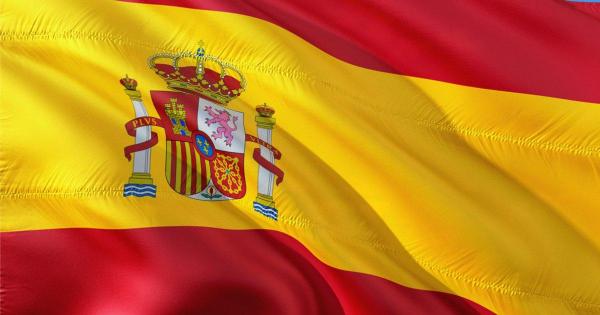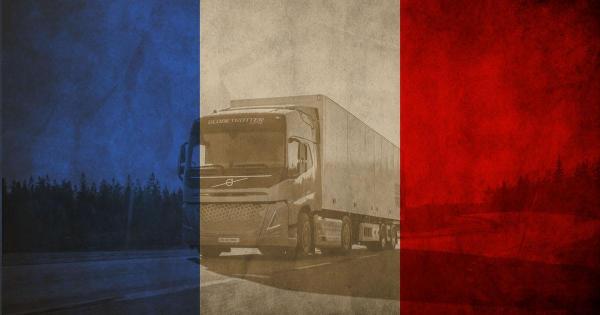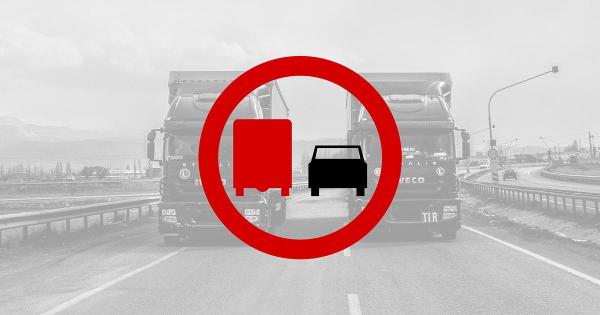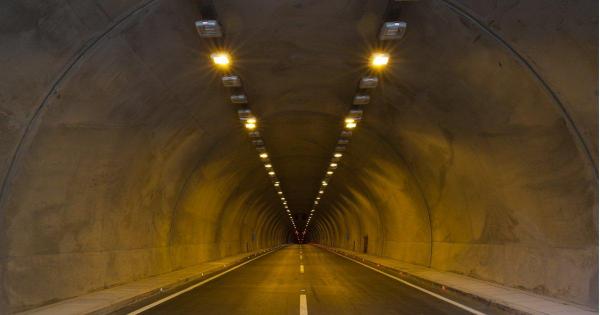
Tirol increases the number of HGV traffic restrictions
According to the new calendar approved by the Tyrolean state government for the first half of 2023, there are 24 days when the number of lorries allowed to pass the German-Austrian border per hour will be limited. That is 3 more days than in the same period of 2022.
On these days, the police will slow down HGV traffic at a specially created checkpoint on the A12 in the direction of Innsbruck near Kufstein Nord, starting from 5 AM and, if necessary, bring it to a standstill so that only around 300 trucks from Germany are allowed to travel along the A12 per hour.
The calendar for the first half of 2023
➡ January 9 (Monday)
➡ February 6 (Monday)
➡ February 13 (Monday)
➡ February 20 (Monday)
➡ February 27 (Monday)
➡ March 6 (Monday)
➡ March 13 (Monday)
➡ April 26 (Wednesday)
➡ April 27 (Thursday)
➡ May 2 (Tuesday)
➡ May 15 (Monday)
➡ May 16 (Tuesday)
➡ May 17 (Wednesday)
➡ May 19 (Friday)
➡ May 26 (Friday)
➡ May 27 (Saturday)
➡ May 30 (Tuesday)
➡ May 31 (Wednesday)
➡ June 1 (Thursday)
➡ June 3 (Saturday)
➡ June 5 (Monday)
➡ June 6 (Tuesday)
➡ June 7 (Wednesday)
➡ June 9 (Friday).

Diesel lorries to be completely banned in Lyon by 2026
The French city of Lyon has voted in favour of establishing a stricter Low Emission Zone (ZFE) from next year. The use of diesel lorries, which is now restricted, will be banned altogether from 2026.
As a result of the last vote, the ban on passenger cars with category 5 environmental vignettes (diesel cars registered before 1 Jan 2001) and unclassified private vehicles came into force on 1 September 2022. According to the adopted schedule, the ban will be gradually extended between 2023 and 2026 to include vehicles belonging to categories 4 (Euro 4), 3 (Euro 5) and 2 (Euro 6).
The Low Emission Zone includes:
– almost all the municipal districts of Lyon,
– parts of Villeurbanne, Bron and Vénissieux contained within the Laurent Bonnevay ring road
– the entire municipality of Caluire-et-Cuire.
It is worth mentioning that the Low Emission Zone (ZFE) in the city of Lyon was established on January 1, 2020. The ban applies to HGVs and light commercial vehicles used for transporting goods with Crit’air 3, 4 or 5 stickers (category N), which means that these vehicles can no longer drive or park in the ZFE. Failture to comply entails a penalty of € 68 for light commercial vehicles and € 135 for trucks.
To support hauliers, the city of Lyon offers subsidies for the procurement of clean vehicles (running on natural gas or electric: BEV or FCEV):
• light commercial vehicles: EUR 5,000 for 100% CNG or 100% electric, EUR 8,000 for hydrogen vehicles ,
• lorries (with MAM of over 3,5 t): EUR 10,000 for 100% CNG or 100% electric vehicles, EUR 13,000 for hydrogen vehicles,
• electric powered tricycle: EUR 3000.
Hauliers purchasing HGVs or LGVs, can receive additional amount of 1,000 euros when they sign a green gas or green electricity supply contract for a minimum of 2 years.

Spain: A6 closures
The closures are due to resurfacing work on the section of the A-6 in Madrid in the direction of A Coruña between KP 12+850 and 18+000.
➡ two lanes of the A-6 in the direction of A Coruña will be closed from 7:00 PM to 7:00 AM and one lane from 7:00 AM to 7:00 PM between 00:00 on Tuesday, August 16 and 12:00 on Friday, August 19
➡ The BUS-VAO road in the direction of Madrid will remain open from 6.30 AM to 11.30 AM and in the direction of Coruña from 12.00 to 11.00 PM, as this the central road with free access depending on the registered traffic volume
➡ The M-40 / M-503 / M-50 corridor is recommended as an alternative route.

HGV restrictions in Catalonia
Owing to forecasts of significant increases in traffic volume on the 9th and 11th of September, an additional restriction has been introduced on some road and motorway sections for vehicles or combinations of vehicles with a maximum authorised mass of more than 7.5 tons, which are required to use the right lane and must not overtake other vehicles and drive faster than 80 km/h.
The restriction on Friday, September 9, will apply on:
➖ the AP-7 motorway, between KP 126, exit 12B at La Roca del Vallés, Granollers and the junction with the C-60 in La Roca del Vallés, and KP 172, exit 25 at Martorell and the junction with the A-2 in the Motoresll commune, from 5:00 PM to 9:00 PM;
➖ the AP-7 motorway in the territory of Terres de l’Ebre, where there are only two lanes, between KP 257, exit 35 at Vila-seca, Salou, Reus S. and Port Aventura, in the municipality of Vila-seca, and KP 344,8 the border between Tarragona and Castellón, in the municipality of Ulldecona, from 3:00 PM to 9:00 PM.
The restriction on Sunday, September 11, from 3:00 PM to 10:00 PM will apply on:
➖ the northbound C-32, between KP 114, at the junction 113 at Canet de Mar, in the municipality of Canet de Mar, and KP 84.5, at the junction with the B-20, in the municipality of Montgat.
➖ the northbound AP-7 motorway, between KP 111.1, exit 11 at Sant Celoni and Montseny in the commune of Sant Celoni, and KP 133.8, exit 13 at Granollers, Montornès del Vallès and Vilanova del Vallés, in the municipality of Montornès del Vallès;
➖ the southbound AP-7 motorway, between KP 158, where the B-30 joins the AP-7, in the commune of de Sant Cugat del Vallés, and KP 213 in the commune of Banyeres del Penedès, the fork junction AP-7 / AP-2
➖ the B-23, between KP 8, exit 8 at Sant Feliu de Llobregat and Molins de Rei Sud, in the municipality of Sant Feliu de Llobregat, and KP 15.5 on the B 23, at the junction with the AP-7, in the municipality of Castellbisbal.

August 15 without a ban on heavy goods vehicles in France
The waiver is effective on Monday, August 15, 2022 from midnight to 2:00 p.m. and applies to the carriage of selected goods.
Bans will be lifted on vehicles transporting only food and feed, hygiene products and drugstore products from storage to point of sale, within the goods shipping area and adjacent departments on Monday 15 August 2022 from midnight to 2:00 pm. The return of these vehicles unladen after unloading is allowed in the shipping area and adjacent departments.
In the event of an inspection by the agents of the competent authority, drivers must be able to demonstrate compliance with the transport carried out. Any document allowing the justification of the transport must be delivered to the agents of the competent authority and be in the vehicle or be immediately available (e.g. online).

Belgium: renovation work in the Kennedytunnel and Liefkenshoektunnel
Traffic in the area is going to be seriously affected.
The Kennedytunnel
In order to reduce inconvenience to drivers, the renovation work will be conducted mainly at night. During the first phase, starting on August 21, work will be carried out in the tube in the direction of Ghent. Work in the tunnel in the direction of Antwerp will commence in January 2023.
Closure schedule
in the direction of Ghent
➡ from Sunday, 21 August to Monday, 19 December
➡ weekend closure from 2 to 5 December OR from 9 to 12 December (subject to change)
in the direction of Antwerp
➡ night closures from January 15, 2023 to May 23, 2023
➡ weekend closure from 5 to 8 May, 2023 OR from 12 to 15 May, 2023 (subject to change)
Night closures, lasting from 9:00 PM to 5:00 AM, will take place on Sundays, Mondays, Tuesdays, Wednesdays and Thursdays. When the tunnel is closed at night, traffic will always be diverted through the other tunnel, with one lane for each direction of traffic.
The Liefkenshoektunnel
Work in the tunnel in the direction of the Netherlands will start at 10:00 PM on Friday, August 26 and will continue until 5:00 AM on Monday 5 September.
❗ Only 1 lane (3.75 m wide) will be available during this time. For the sake of traffic safety, drivers are advised to avoid journeys through the Liefkenshoektunnel during the above-mentioned period. Transports wider than 3.75 m will not be allowed to use the tunnel.

HGV restrictions in Catalonia
Owing to forecasts of significant increases in traffic volume on the 2nd and 4th of September, an additional restriction has been introduced on some road and motorway sections for vehicles or combinations of vehicles with a maximum authorised mass of more than 7.5 tons, which are required to use the right lane and must not overtake other vehicles and drive faster than 80 km/h.
The restriction on Friday, September 2, will apply on:
➖ the AP-7 motorway, between KP 126, exit 12B at La Roca del Vallés, Granollers and the junction with the C-60 in La Roca del Vallés, and KP 172, exit 25 at Martorell and the junction with the A-2 in the Motoresll commune, from 5:00 PM to 9:00 PM;
➖ the AP-7 motorway in the territory of Terres de l’Ebre, where there are only two lanes, between KP 257, exit 35 at Vila-seca, Salou, Reus S. and Port Aventura, in the municipality of Vila-seca, and KP 344,8 the border between Tarragona and Castellón, in the municipality of Ulldecona, from 3:00 PM to 9:00 PM.
The restriction on Sunday, September 4, from 3:00 PM to 10:00 PM will apply on:
➖ the northbound C-32, between KP 114, at the junction 113 at Canet de Mar, in the municipality of Canet de Mar, and KP 84.5, at the junction with the B-20, in the municipality of Montgat.
➖ on the roads between the southbound C-32, between KP 47.5, the Gavà exit, the municipal border of the commune of Gavà and KP 60, exit 15 at l’Hospitalet, in the commune of Cornellà de Llobregat;
➖ the northbound AP-7 motorway, between KP 111.1, exit 11 at Sant Celoni and Montseny in the commune of Sant Celoni, and KP 133.8, exit 13 at Granollers, Montornès del Vallès and Vilanova del Vallés, in the municipality of Montornès del Vallès;
➖ the southbound AP-7 motorway, between KP 158, where the B-30 joins the AP-7, in the commune of de Sant Cugat del Vallés, and KP 213 in the commune of Banyeres del Penedès, the fork junction AP-7 / AP-2
➖ the B-23, between KP 8, exit 8 at Sant Feliu de Llobregat and Molins de Rei Sud, in the municipality of Sant Feliu de Llobregat, and KP 15.5 on the B 23, at the junction with the AP-7, in the municipality of Castellbisbal.

Bavaria: a driving ban for lorries over 7.5 tons on the Weißbach bridge
Owing to the poor structural condition of the bridge over the Weißbach river and the damage analysis that has not yet been completed, the local authorieties of the Berchtesgadener Land district have issued a driving ban for HGVs with a MAM of over 7.5 tons.
Since the condition of the bridge is still unclear, the road construction authority responsible for the B21 road that passes over it considers it necessary “to take further precautionary measures until the final results are available”. “It is therefore recommended that HGV traffic should be reduced to a necessary minimum – initially until the final result of the damage analysis are available.”
The B21 is the only road that passes through the so-called “little German corner”, which cuts into the Austrian territory between the Melleck border crossing and Salzburg. It is also the only route that emergency services can use to reach the hospital in Bad Reichenhall.
The first precautionary measures have already been taken by the road construction authorities. The speed limit on the bridge has been reduced to 30 km/h and concrete safety barriers have been erected on both sides of the road.
The only vehicles excluded from the driving ban are lorries delivering supplies to the districts of Berchtesgadener Land (BGL), Traunstein (TS), Zell am See (ZE) and Kitzbühel (KB).
Information about the HGV ban will be posted at all important intersections throughout the districts of Berchtesgadener Land and Traunstein, and traffic from the Austrian district of Lofer will be diverted via the A8 motorway back to Austria.
The ban will come into effect once the information signs are put up by the Traunstein Building Authority.

Fee waiver for special transports on AP9 and AP53 in Spain
Transports with certain dimensions will be able to travel for free on the AP9 and AP53 motorways overnight until December 31, unless an alternative section is available in advance.
The collapse of the two spans of the El Castro viaduct on the A6 at the height of Pedrafita do Cebreiro in the lane towards Madrid made certain transports impossible to travel through the city due to dimensions and road safety hazards. Therefore, the Spanish Ministry of Transport allows free travel on the AP9 and AP33 motorways between 22:00 and 6:00 for trucks over 26 meters long and 3 meters wide.

Closures of the Mont Blanc Tunnel in September, October und November
Owing to maintenance works, the tunnel will be completely closed from 7:30 PM to 6:00 AM on the following nights:
➖ August 31 / September 1
➖ September 1/2;
➖ September 5/6;
➖ September 6/7;
➖ September 12/13;
➖ September 13/14;
➖ September 14/15;
➖ September 15/16;
➖ September 19/20;
➖ September 20/21;
➖ September 21/22;
➖ September 22/23;
➖ September 26/28;
➖ September 27/28;
➖ September 28/29;
➖ September 29/30;
➖ October 3/4;
➖ October 4/5;
➖ October 5/6;
➖ October 6/7;
➖ October 10 (from 10:00 PM) to October 11 (to 6:00 AM);
➖ October 11/12;
➖ October 12/13;
➖ October 13/14;
The tunnel will be completely closed for 21 days
➖ from 5:00 PM on October 17 to 10:00 AM on November 7.